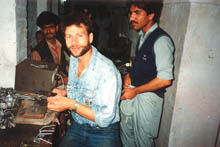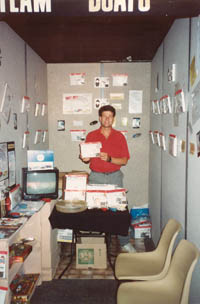Previously, before producing our own steam boat kits, I used to source out different kinds of pop-pop steam boats from West and East Asia, and market these. Not to name them, I still see them for sale through different parties on the internet and through different outlets. Yes they did sell quite well for us though the quality and performance of the boats were quite poor. These low grade Asian boats gave me grief while marketing them. I’ll tell you why. Problem (1) It was a real hit and miss situation importing these into Australia. These low grade Asian boats although looked okay, were packaged wrongly aiming at small children with little or no safety labelling which did not come up to the standards set down by the toy authorities and were frowned upon . This may have been one of the reasons why toy shops had not sold these for decades. I was lucky, I managed several shipments. I heard about others that were not so lucky and had their shipments confiscated and destroyed by Customs. What a blow financially to the hip pocket! Although these little boats were charming, I felt like I was peddling a contraband. Problem (2) These low grade Asian boats were of poor quality made by small backyard cottage industries and factories that didn’t care if their product did not work properly as long as they sold them. None of these manufacturers used Western input in their product. To save on cost, none of these boats used correct material for the boiler diaphragm or if they did, they used cheaper and thinner gauge than appropriate, which is detrimental for good performance and longevity. These manufacturers did not individually test each product, so it was impossible to guarantee to the customer that they had a definite worker. The failure rate was quite high and the ones that worked did not work all that well anyway. As I had a small collection of good quality original antique boats, I knew exactly what a quality putt-putt boat should look like and how it would perform, and felt bad that I was marketing a substandard product to people that believed these poor Asian mock-up boats were of the same quality as the ones made over a half century ago.
WHAT I DID TO PRODUCE A QUALITY PUTT-PUTT BOAT I WOULD FEEL GOOD ABOUT, AND A PUTT-PUTT BOAT THAT THE TOY INDUSTRY WOULD BE HAPPY WITH.
First I went through my collection of antique boats, studying them and working out what aspects made a good putt-putt boat. With these details, I took off to Asia to see what I could do with my previous manufacturers to get an outcome. On the final stage of my journey, I discovered a new manufacturer. To my astonishment, he was manufacturing an exact copy of a little Japanese run-about boat originally manufactured in 1930-1950 in Tokyo. I knew this model well as I had one in my collection and it was the best little runner of the lot of them. The Japanese toy engineers at the time got everything right with the critical dimensions used in the manufacture of this little boat’s boiler unit. Along with this, they did not cheap out but used the correct material and gauge for the diaphragm on the boats’ “w.p” boiler system (brass shim plate). Using brass shim instead of cheaper materials, means that we get a good flexibility which is imperative to get a smooth running heartbeat in the water pulsating boiler unit. The brass shim also gives us a good loud pop-pop sound. Let’s face it, if you got a pop-pop boat, you want it to go “pop-pop” and run well! I checked over the quality of his boats, to my liking they were made perfect to the same standard as the original Japanese model. Even using the right gauge of brass shim plate in the construction of the boiler.
With some minor changes, I now had my quality boat I was looking for, to market. But how was I going to get it accepted to the toy industry with the taboo of using fire in a kid’s toy? I noticed in toy and hobby shops, model steam engines and construction science kits for sale that used fire. Though these were not aimed at small children and they were appropriately marked with safety instructions. This is how I would sell our boat, not as a toy (who were we fooling really!). In fact, it’s an educational build-it-yourself construction science model kit “nostalgic style”, that teaches the skill of science and simple engineering. And guess what? This strategy worked to get our product on the shop shelves successfully. Over the years we have now sold ten of thousands of these little boats. I guess it’s because people know we have a quality product just like the ones available over a half a century ago. And many of the same happy customers keep on coming back to us.



